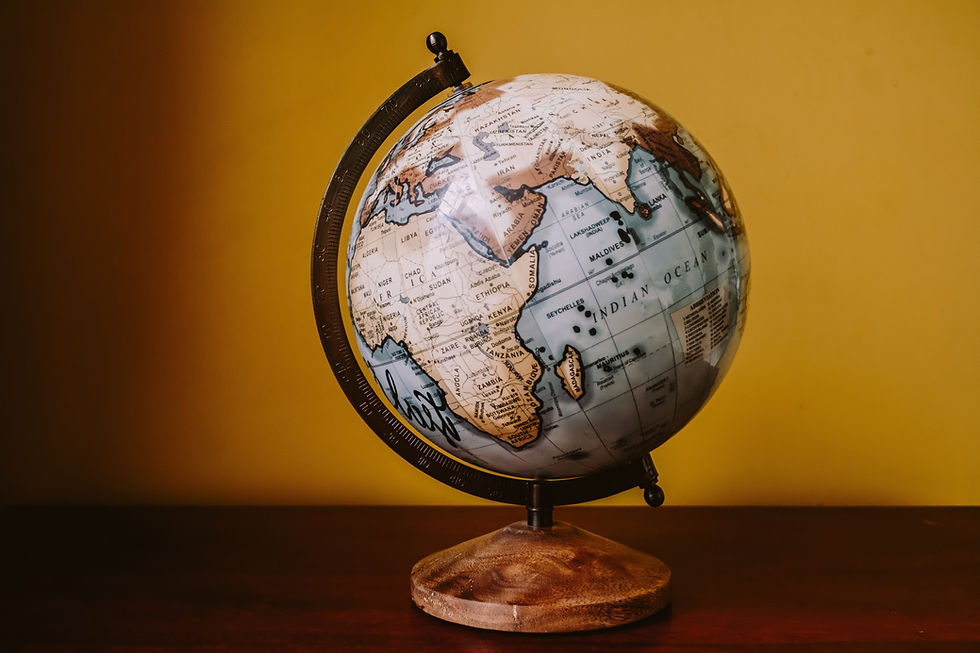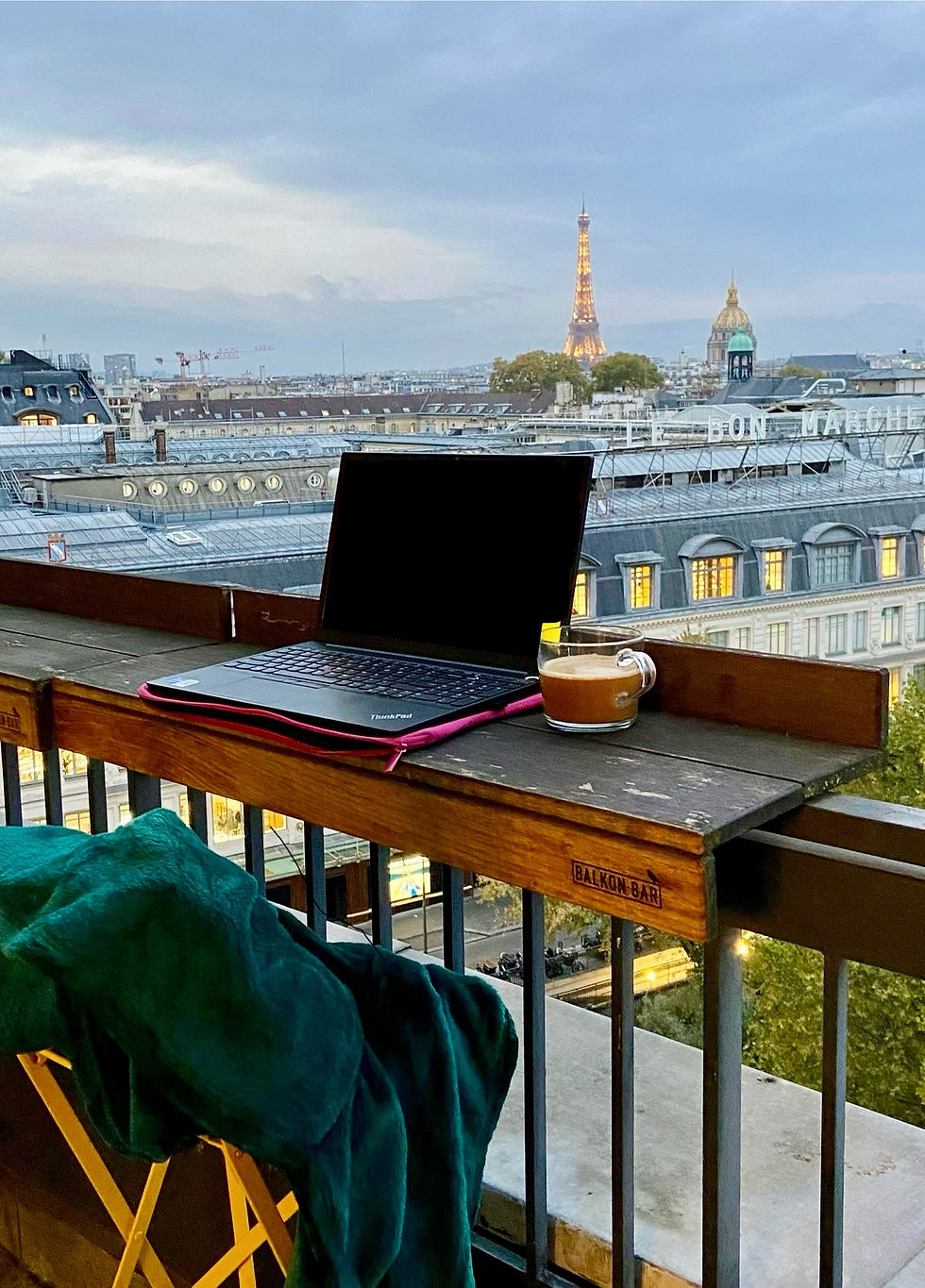Your Ultimate Travel Planning Guide: Step-by-Step Directions with Top Planning Tools
- oliviazolke
- May 5
- 7 min read
Updated: Aug 20
by Olivia Zolke
Planning a trip can feel overwhelming—but it doesn’t have to be. Whether you're organizing a big multi-country adventure or a quick weekend getaway, having a clear plan (and the right tools) makes all the difference.

Some of the links in this article are affiliate links, which means I may earn a small commission at no extra cost to you. I only recommend products and services I genuinely use and love—these have been carefully curated as my top recommendations!
Below is the exact step-by-step process I use to plan my trips efficiently—and enjoyably. From picking your destination to booking the perfect stay and securing tours in advance, here’s how to make travel planning stress-free, streamlined, and personalized to your interests.
I’ve been traveling—and planning—for over 12 years, both solo and with friends and family. I organize everything from weekend getaways to multi-country adventures, and through a lot of trial and error, I’ve refined this method into what I truly believe is the most effective, flexible, and enjoyable way to plan a trip.
Whether you’re mapping out your very first itinerary or just looking to make your next vacation a little smoother, this guide is for you.

Step 1: Pick Your Destination(s)
This is the exciting part—where the dreaming begins. But before you start pinning every city that’s ever shown up on your Instagram feed, ask yourself two important questions:
1) How much time do I realistically have? A week in Europe doesn’t mean 5 cities. Be mindful of travel time between destinations and give yourself room to breathe and immerse yourself in the location. Travel feels so much richer when you’re not constantly rushing to the next place. Slowing down allows you to discover hidden gems, savor local food, and actually enjoy the trip you worked so hard to plan.
2) How will I get from place to place? Be mindful of travel time between destinations and give yourself room to breathe and immerse yourself in the location. Travel feels so much richer when you’re not constantly rushing to the next place. Slowing down allows you to discover hidden gems, savor local food, and actually enjoy the trip you worked so hard to plan. Omio is the best tool to check routes and book cross-country transportation in one place. It compares trains, buses, and flights side-by-side and often includes routes and timetables that are hard to find elsewhere. It’s especially helpful for regional train connections and smaller destinations.
Not sure where you want to go, or open to letting the price determine your destination? See the tips below for flight finding! If you're not set on a destination, or choosing between a few, sometimes letting the deal or flight availability and routes can help you make the final decision.
Step 2: Research Your Flights

Flights are often the biggest single expense in your entire trip—so if you're working with a flexible schedule or open-ended itinerary, it's smart to start here.
Instead of locking in travel dates first, let the flight prices help guide your plans. Sometimes leaving just one day earlier (or flying into a different nearby airport) can save you hundreds of dollars. If you have wiggle room, use that flexibility to your advantage and book the best-value flight first—then build the rest of your trip around those dates.
I always use a combination of flight tools to find the best routes and deals:
Skyscanner: Best for flexible searches across multiple dates/destinations
Google Flights: Ideal for tracking flight prices and finding routes quickly
Hopper: Great app for predicting when prices will rise or fall
How to make the most of these platforms:
If you're visiting multiple cities, search for multi-city flights (e.g., fly into Paris and out of Rome) instead of round-trip. It can save time and money.
Open to different destinations? Search "everywhere" or leave the destination blank to find the cheapest flights from your origin airport during your date range!
If you haven't yet—sign up for a travel rewards credit card (or cards).
Step 3: Build Your Itinerary

This is where your trip starts to take shape—and it should be based on your own interests, not just what the guidebooks say you “have” to do. This phase should feel fun and personal. Don’t overpack your itinerary—leave time for spontaneous discoveries, people-watching, and the kind of moments you just can’t plan for.
Before booking your accommodation, it’s key to research what you actually want to do in your chosen destination(s). If your itinerary shapes where you stay, it will make getting around a lot easier if you're staying in an area near the sites and activities you'll be adding to your itinerary!

How to Start:
Start by researching the experiences, attractions, neighborhoods, and local spots that actually excite you. Love food? Prioritize market tours and top-rated restaurants. Into history? Look for walking tours, castles, or UNESCO sites. Not into art? Skip the art museum (yes, even the Louvre)—your time will be much better spent seeking out a different genre of museum or activity that you will actually enjoy. Prioritize your must-sees and use that list to map out a basic plan.
Top Tip:
If you're visiting a new city, I always recommend a guided city tour on the first day. A tour gives you a feel for the city’s layout, and an opportunity to learn about the significance of different neighborhoods or buildings that may not be evident if you were just walking by. Having a knowledgeable guide explain the history, culture, and quirks of a place brings it to life in a way guidebooks and blogs just can’t. You’ll appreciate everything you see afterward so much more. Plus local guides are often full of insider tips—where to eat, what to skip, how to beat crowds, and what’s happening that week. It’s like getting a curated intro from a friend who lives there.
Book in Advance:
Don’t forget to reserve experiences or tickets—especially for popular museums, landmarks, and cultural sites that sell out in advance. For advance tickets for major landmarks, you will often find the best pricing and options directly from the official website. However, you can also find great deals on the below sites for those main attractions, especially if you're looking for an extra perk (such as a "highlights" guided tour of the Louvre) or you're looking to bundle two major attractions.

These are my go-to platforms for finding experiences, tours, and tickets. Use the filters to help you narrow down activities that will meet your personal interests and travel style!
Viator: Tons of guided tours, skip-the-line tickets, and day trips
GetYourGuide: Excellent for landmark entry and city-specific experiences
Need a head start or itinerary building inspiration?
Grab one of my free City Starter Pack Guides—they’re designed to help you quickly learn the layout of the city, top sights, and how to plan your days effectively. Don't see the city you're looking for? You can use these guides as a template to create your own starter pack, or drop a question in the comments!

Step 4: Find a Place to Stay
Once your itinerary is sketched out, it’s time to find a stay that fits your style, budget, and daily plans. Wherever you book, aim for central or well-connected neighborhoods based on your itinerary—less commuting, more exploring!
Quick tips for choosing property type:
Apartments are great for longer stays, groups, or travelers who want to cook or live more like a local.
Hotels are best for: short stays, solo trips, and food lovers who plan to eat out often.
Here are my go-to accommodation platforms:
Expedia: Great for hotels, bundles, and loyalty perks
Hotels.com: Fantastic selection and flexible cancellation
Airbnb: Best for unique stays or group trips
How to make the post of these platforms:
Make use of the filters to help you filter to desired property type, as well as desired amenities.
Sign up for free rewards rewards programs for extra discounts and rewards cash back.
Check out available bundling discounts when booking accommodations with extras such as airport transfer or car rentals
A Few Final Planning Tips
Travel planning doesn’t have to be chaotic. When you break it down step by step, it becomes something to enjoy—not stress over. And with the right resources, you can make smart decisions without spending hours digging through Google or social media.
One final recommendation: If you haven’t yet—sign up for a travel rewards credit card (or cards) before you book anything. It’s one of the easiest ways to make your travels work for you, both now and in the future. If you're planning to spend on flights, accommodations, and tours anyway, you might as well earn points or miles that can help you take your next trip for less.
Quick tips for picking the best travel rewards card:
Check the fees: Always pick a card with no foreign transaction fees (so you can use the card for all purchases- even for your voyage or when abroad!). Check to see if there is an annual fee and if you are comfortable paying it (there are plenty of great cards with no fee!)
Check the destinations and partner airlines: make sure this card will actually get you to the destinations you want to go!
Look for welcome bonuses: Many travel cards offer generous welcome bonuses (often enough for a free flight or hotel stay)
Extra perks: Many cards will have ongoing perks like free checked bags, airport lounge access, and travel protections.
Whether you're planning a solo adventure, a romantic getaway, or a big group trip, I hope this guide helps you travel with more ease, intention, and joy.
Have a question or want more travel tips? Drop it in the comments or sign up for the newsletter for exclusive planning advice delivered straight to your inbox.
Looking for more hands-on travel planning guidance? Check out my consultation services and let me do the heavy lifting, or help build your dream voyage alongside you!




Comments